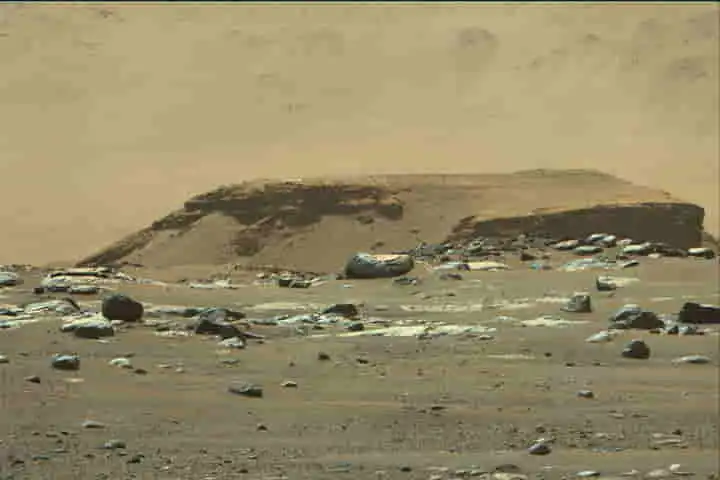A new paper from the science team of NASA’s Perseverance Mars rover released on Thursday reveals more details about the ancient river that flowed into the now-dry lake at Jezero Crater on the planet. The presence of water raises the possibility that there could have been ancient microbial life on the planet.
The images reveal that billions of years ago, when Mars had an atmosphere thick enough to support water flowing across its surface, Jezero’s fan-shaped river delta experienced late-stage flooding events that carried rocks and debris into it from the highlands well outside the crater, according to a statement on the NASA website.
The findings are based on detailed imaging the rover provided of long, steep slopes called escarpments, or scarps in the delta, which formed from sediment accumulating at the mouth of an ancient river that long ago fed the crater’s lake, the statement said.
Taken by the rover’s left and right Mastcam-Z cameras as well as its Remote Micro-Imager, or RMI (part of the SuperCam instrument), they also provide insight into where the rover could best hunt for rock and sediment samples, including those that may contain organic compounds and other evidence that life once existed there.
“Never before has such well-preserved stratigraphy been visible on Mars,” said Nicolas Mangold, a Perseverance scientist from the Laboratoire de Planétologie et Géodynamique in Nantes, France, and lead author of the paper.
“This is the key observation that enables us to once and for all confirm the presence of a lake and river delta at Jezero. Getting a better understanding of the hydrology months in advance of our arrival at the delta is going to pay big dividends down the road.”
The rover team has long planned to visit the delta because of its potential for harbouring signs of ancient microbial life. One of the mission’s primary goals is to collect samples that could be brought to Earth by the multi-mission Mars Sample Return effort, enabling scientists to analyze the material with powerful lab equipment too large to bring to Mars.
The paper on Perseverance’s scarp imagery – the first research to be published with data acquired after the rover’s Feb. 18 landing-was released online today (Friday IST) in the journal Science.




















